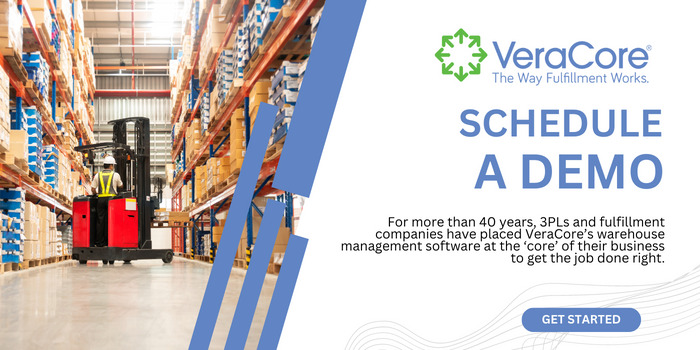It’s no secret that eCommerce returns are more challenging than brick-and-mortar returns for the customer and the retailer. There is a complicated process involved, including managing shipments, covering return shipping costs, and returning products into warehouse inventory with an organized put-away process. Here we explain how to optimize returns management to streamline the process, enhance customer satisfaction, and turn returns into opportunities for positive customer experiences.
What is Returns Management?
Returns management improves the flow of a product from the consumer back to your warehouse. You can streamline this process with a formal process in place, leveraging a warehouse management system (WMS) that includes returns in your inbound processes.
Improve Quality Control
It all begins by improving quality control. You can use the following steps to create a more structured order-checking process:
- Use Technology: Technology improves order checking using scanning and checks to reduce mis-picks so orders are always right from the get-go. You can also use a warehouse management system that sets order rules to stop the order process when steps are not followed. Technology also improves inventory replenishment to reduce returns related to short shipping.
- Optimize Fulfillment: You can optimize fulfillment using the following process improvements:
- Introduce multiple item order and shipping protocols to address all possible scenarios to avoid errors and mis-picks
- Use smart space allocation to make it less likely a picker will grab the wrong size or colour for like items
- Improve flow, creating improved SKU allocation
- Introduce automation to reduce steps and error-prone manual tasks
- Integrate CRM: CRM allows you to alert customers about order issues, so you can automatically apply a discount for inventory shortages or apply an automatic refund for missed items to avoid returns.
Track Return Patterns
Use your WMS or returns management system to track returns and look for patterns that indicate order fulfillment inefficiencies and errors. Although orders are often returned due to product disappointment, they also occur due to order errors or poor packaging. If you track returns and review the reasons, you can resolve issues related to fulfillment to reduce returns.
Find the Right Return Window
Your customer retention will suffer if you don’t have a reasonable return window. Make it too long, and you risk them not making the deadline. As a result, they have to keep a product that doesn’t make them happy, which means they won’t become a return customer. Make it too short, and customers won’t have enough time to make their returns. You can find the sweet spot that allows customers to make returns while not causing too much confusion to inventory counts and also the sellability of the return.
For example, a 90-day return policy for seasonal items will lead to write-offs since the items are no longer in demand. It might take some testing to see where customers’ response is the most positive, allowing you to build trust and improve customer retention despite returns. One last thing, generous windows also open the doors for abuse of your returns policy.
Create an Easier Returns Process for Customers
Although you want to discourage returns, they play an important role in customer satisfaction. You want to create positive experiences that build trust and encourage customer loyalty. If you either don’t accept returns, don’t seem to stand behind your return policy by questioning refunds, or make it difficult for customers to make returns, you negatively impact customer retention. First, you have to have a very visible return policy so customers understand how it works.
Next, you need to create a seamless and easy return policy. Although this does increase the risk of customer abuse, it improves customer satisfaction. Some positive return policies include:
- Visible return policies on all product and checkout pages
- Free return shipping using a WMS to print and send labels
- An automated returns portal on your eCommerce site
- The choice to return the product to the warehouse or store
This will reduce the risks of chargebacks or customer loss.
Process Optimization Using Automation
An advanced WMS allows you to incorporate returns seamlessly into your put-aways process. You can automate steps and leverage system recommendations to get the items back into your inventory. With built-in quality controls, you can also confirm that inventory is placed in the correct location to avoid future errors and inaccurate inventory counts.
Your team needs to get the right product to the right person to reduce the risk of returns. With a seamless e-Commerce fulfillment process, you create positive customer experiences and avoid the costs related to order errors. You also streamline returns management with state-of-the-art inventory functions and seamless put-away integrations that keep your team efficient.


VeraCore is SaaS order and warehouse management software trusted by top fulfillment companies and 3PLs. Affordable, flexible, easy to use; VeraCore is everything you need to keep clients happy and run a lean operation.
With VeraCore, you can grow your business and handle any challenge with ease. Rules-based automation enables you to control all aspects of your warehouse operation and satisfy each of your clients’ unique requirements.
Hundreds of fulfillment service providers and 10,000+ fulfillment clients place VeraCore at the “core” of their business to get the job done right, for over 40 years.


